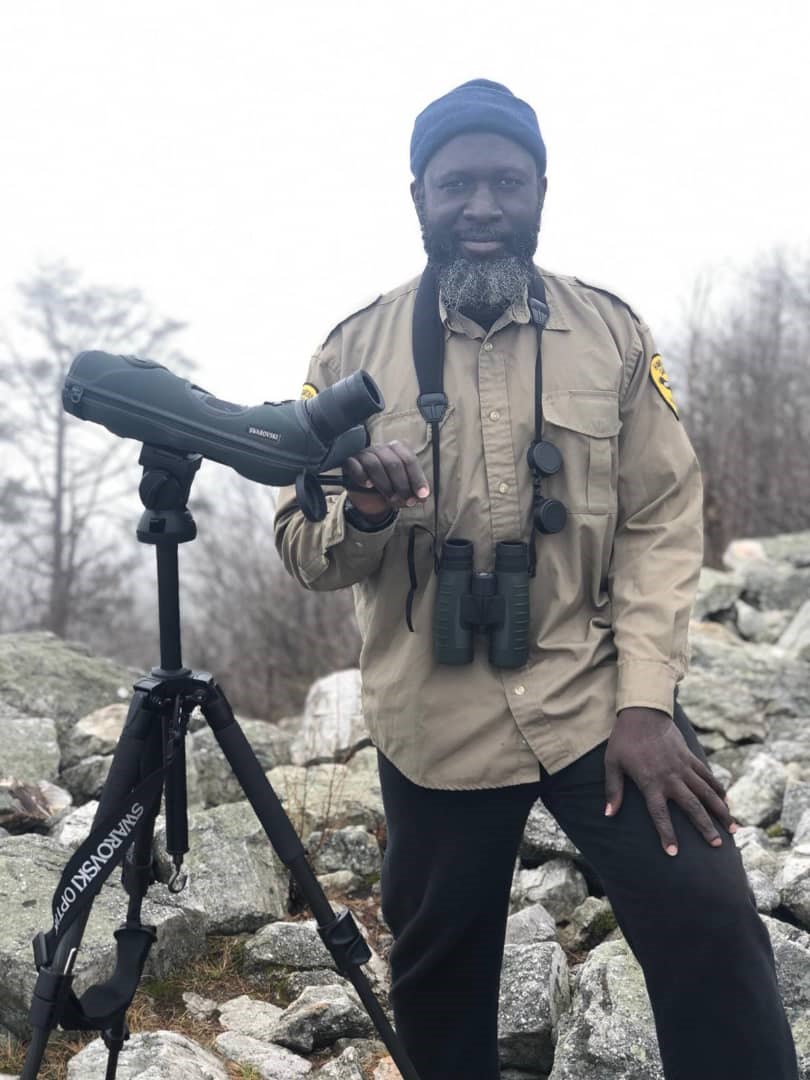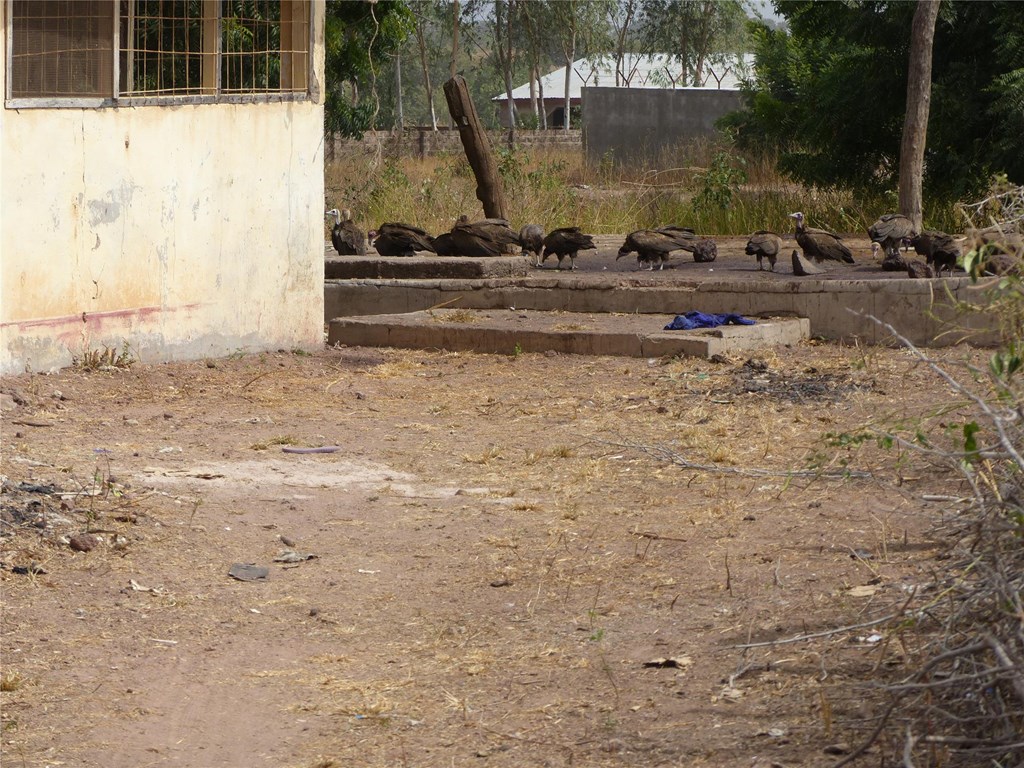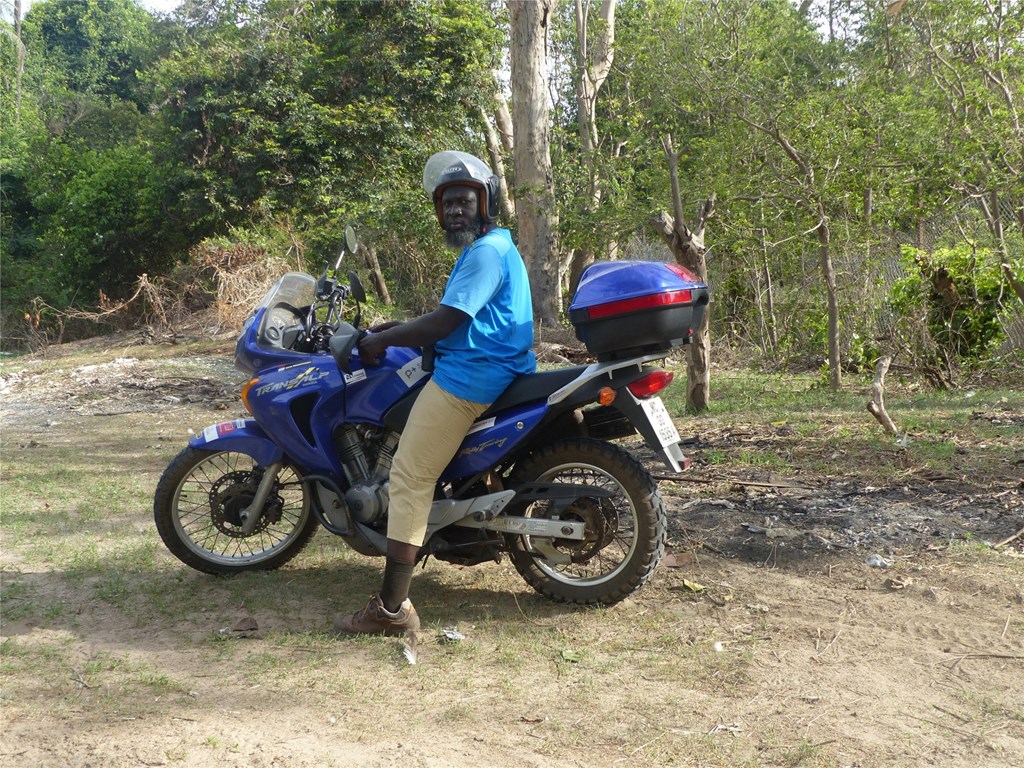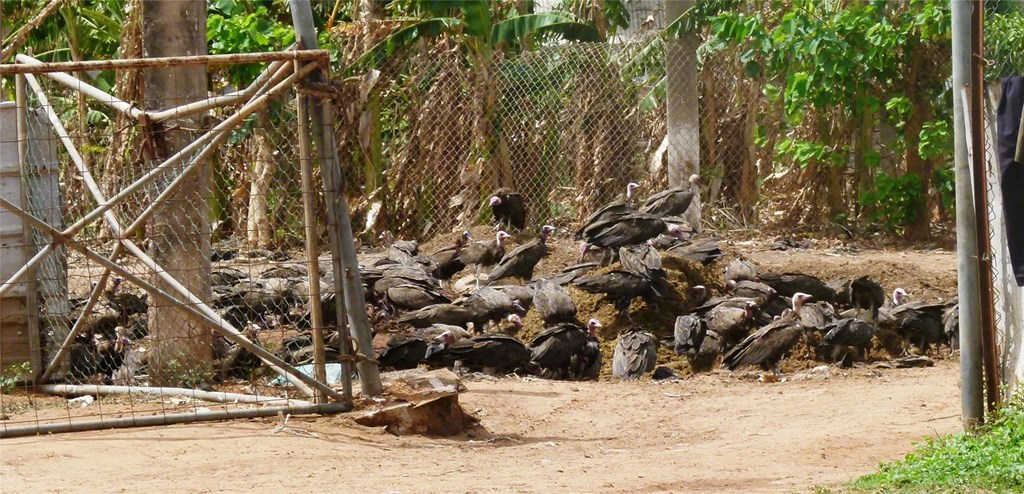How Hawk Mountain Helped Bring Vulture Awareness to The Gambia
Posted on in In the Field by Momodou Lamin Dibba, Spring 2019 Conservation Science Trainee

I started my career in wildlife as a records clerk at The Department of Parks and Wildlife Management. My principal role there was to register and file all incoming and outgoing official letters, reports, and memoranda of understanding. Being so exposed to wildlife related activities such as species inventory, species monitoring, and local trainings, I started to feel the love for wildlife and conservation and was eventually re-designated as a database manager in 2008, a position I continue to hold. My office is located in the Abuko Nature Reserve in The Gambia, one of the National Protected Areas being conserved and managed. In my office campus, I always have the chance and feel the joy of interacting with some of the primates living close by who sometimes come so close to humans and snatch any food unattended that could easily be grabbed.
Prior to being a conservation science trainee at Hawk Mountain Sanctuary, I would say that the only raptors I could comfortably identify were hooded vultures, which are very common in The Gambia. During my traineeship at HMS, my practical skills in raptor identification improved immensely. I cannot forget the past memories and hospitality accorded to us by HMS staff and volunteers. I also had the chance to go broad-winged hawk nest searching with Laurie Goodrich and monitoring American kestrel boxes with JF Therrien. These were new field experiences for me, which I found so interesting and educational. During one of our broad-winged nest searches, myself and two other summer trainees, Thalia and Grace, were lucky enough to spot a new broad-winged hawk nest, and we felt so happy.
Once back in The Gambia, I spotted some hooded vulture nests and wanted to monitor them during their breeding season to record data. Of course, I was able to do this with technical support from Laurie.

Four hooded vultures were trapped and satellite tracking devices attached in 2013 to monitor their movements in The Gambia during a visit of Hawk Mountain’s former Director of Conservation Science, Keith Bildstein. To determine their population at a local level, I had the chance to do a series of road surveys with two former HMS Trainee Alumni in 2013, 2015, and 2017. The results of these road counts were 1,543 (12 individuals per km), 3,416 (17.5 individuals per km), and 5,832 (10 individuals per km) respectively. HMS generously provided funding for all of these road counts. Although the hooded vulture is globally classified as critically endangered (according to IUCN), these results suggest that The Gambia is an important stronghold for this species.
Relatively fearless of humans, hooded vultures regularly occur in large groups in human-dominated landscapes including house yards, busy fish-landing sites, slaughter houses, and on roadsides where they feed within two meters of people. Their diet consists of domestic animal road kills, scraps from slaughter houses, and blood and ruminant stomach contents dumped purposely for vultures at villages. In addition, several tourist hotels have recently opened “vulture restaurants” to provide photo opportunities for guests. These anthropogenic practices have become an important part of vulture diet in The Gambia.

Gambians tolerate and even welcome hooded vultures. Gambians do not harass orexploit them as opposed to other regions where they face serious direct and indirect persecutions.
However, awareness on the global significance of vulture conservation and its role in ecosystem processes is not known to the majority of Gambians. A former trainee, Mawdo Jallow, received funding from HMS to conduct programs at randomly selected schools nationwide with the aim of raising awareness of the importance of vultures. I was happy to join his efforts. We did presentations in 19 schools and a total of 8,984 students attended our lectures in February 2017.
At Hawk Mountain, my trainee project was designing a study focused on conducting monthly counts of hooded vultures at three major slaughter houses in the West Coast Region of The Gambia. The plan was to collect data over a period of one year to determine year round population fluctuations, trends, and distribution patterns. This information will help to better inform conservation efforts.

“The great aim of education is not knowledge but action.” - Hebert Spencer
A month following my return in June 2019, I started the count with a colleague at the planned project sites. Counting has been conducted on a monthly basis and will continue until the project ends in June 2020. Data collected will be stored electronically in a spread sheet for further analysis that will determine population distribution and trends for the entire year. We will also be able to analyse competition with other raptors while hooded vultures are feeding at the slaughter houses. Maps will be prepared to show hooded vulture concentration at each slaughter house. This data, in combination with the previous survey results, could provide a strong basis for strengthening vulture conservation in The Gambia.
“In the end, we will only conserve what we love. We will only love what we understand. We will understand only what we are taught.” - Baba Dioum
To support global vulture conservation efforts like this, contact Dr. Laurie Goodrich at 570-943-3411 ext. 106 or [email protected].